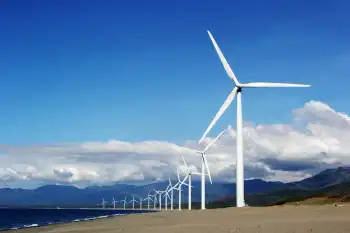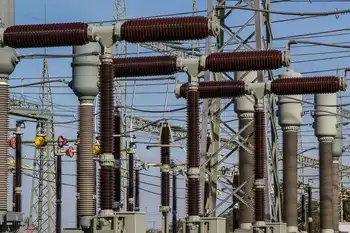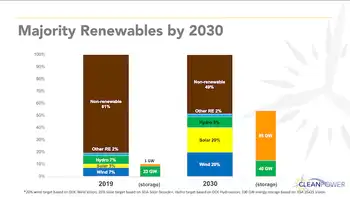Energy system worries officials
SACRAMENTO, CALIFORNIA - Hard work and good luck, combined with excellent hydroelectric conditions and overtime work from aging power plants, enabled California to escape rolling blackouts during the July heat storm, according to state and utility officials.
But although California's electricity system "responded surprisingly well" during the record-breaking weather, which boosted electricity use to a record of 50,270 megawatts, it cannot count on the same cushions in a future energy crunch, said Scott Matthews of the state Energy Commission. He noted that 138 deaths were attributed to the heat, and urged better preparation for future events.
"We've experienced the limits of our risk tolerance," he warned at a recent commission hearing that aimed to draw lessons from the recent heat wave.
Attendees were warned that this heat wave might not be the last. Although many speakers described conditions as "unprecedented," few predicted that they would not recur — especially as greenhouse gas accumulates in the atmosphere.
"What we have seen historically is very likely not what we're going to see in the next few decades," said Daniel Cayan, a meteorologist at the Scripps Institution of Oceanography. He warned that if greenhouse gas emissions continue to grow, the state can expect heat waves that are more intense, cover more territory and occur two to three times as frequently.
Prior to the summer, the Energy Commission and California Independent System Operator predicted statewide energy demand would peak about 47,000 megawatts. Although July's demand soared beyond that estimate, power supplies were adequate. Imports of nearly 10,000 megawatts, including power from hydroelectric projects in the northwest, kept the lights on, officials said.
But hydro conditions were "optimal," said Jim Detmers of the ISO.
A bevy of PG&E officials at the hearing provided an updated version of the heat wave's impact on the utility's 5 million customers. Although the company said last month that 1.2 million customers lost power, a subsequent analysis showed that 737,000 were affected, said Kevin Dasso, the utility's director of asset investment planning.
But at PG&E and across the state, July's outages occurred despite adequate power supplies and a lack of congestion on the high-voltage transmission lines that move power between regions.
Failures of transformers in the local distribution system caused most of the problems, Dasso said.
Noting reports in the media that many of PG&E's nearly 1 million transformers were decades old, he said there was "no correlation between the age of transformers and whether they were going to fail."
But others singled out older transformers as a weak link in their systems. Representatives of Santa Clara's municipal utility and the Los Angeles Department of Water and Power said their older transformers had an especially high failure rate.
Although forecasts said power shortages would most likely occur in Southern California, that is not how it turned out. In part, that is because total demand was about 1,000 megawatts less than expected at the highest points, a Southern California Edison spokesman said.
Some blamed lagging power plant construction on the lack of financial payoffs available in a state power market overseen by regulators averse to price hikes.
"We see the next three years as some pretty tough years in California," said Gary Ackerman of the Western Power Trading Forum.
California Energy Commission member John Geesman and others at the hearing worried that the state had also failed to achieve its goals for so-called demand response programs that pay customers to ramp back consumption when power is tight.
Among the participants in those programs is the Contra Costa County government, which enrolled its jail and two office buildings in a program that offers lower normal rates to customers who pay higher rates on as many as a dozen hot afternoons.
That program backfired in July when one office building saw its normal $20,000 bill jump by $5,000, but it could still pay off in the long run, said Andy Green, the county's energy manager.
But William Marcus of the Utility Reform Network voiced skepticism about how effective the new meters and varying rates would prove at reducing demand. He urged regulators to instead expand programs that allow utilities to ramp back electricity consumption by customers' air conditioners and swimming pool heaters.
Related News

Europeans push back from Russian oil and gas
BERLIN - Europe is producing all-time highs of wind and solar energy as the 27-country group works to reduce its reliance on fossil fuels from Russia.
Four months after Vladimir Putin’s full-scale invasion of Ukraine in February 2022, the European Commission launched REPowerEU. This campaign aims to:
- Boost the use of renewable energy.
- Reduce overall energy consumption.
- Diversify energy sources.
EU countries were already moving toward renewable energy, but Russia’s war against Ukraine accelerated that trend. In 2022, for the first time, wind and solar power surpassed gas as a source of electricity. Wind and solar provided a record-breaking 22% of EU countries’ electrical supply,…




